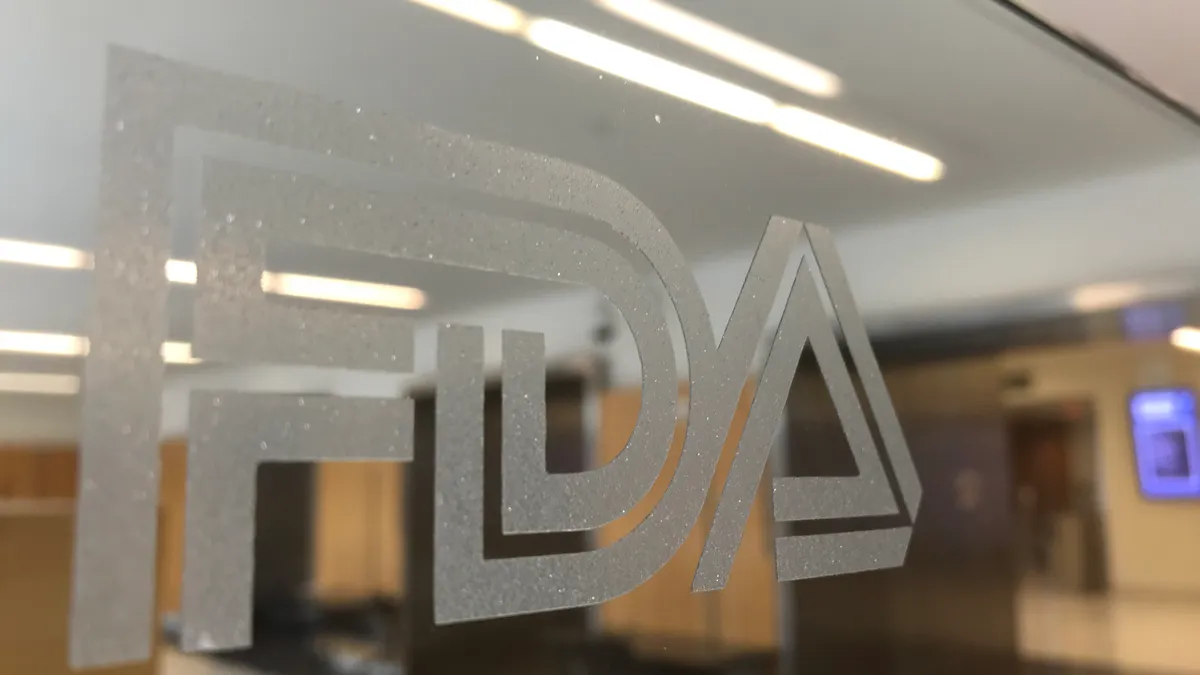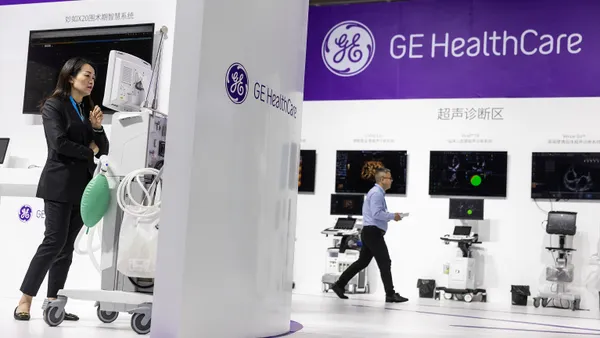Dive Brief:
- With the FDA averaging approximately two De Novo marketing authorizations per month in 2019, current pacing suggests the number of successful bids through the pathway won't match 2018's record-high of 44 clearances.
- Two-thirds of the way through calendar year 2019, the agency has granted 15 of the clearances, down from the 26 it had awarded by Aug. 30 last year. The list of 15 includes Tandem Diabetes' interoperable insulin pump, a wearable wireless neuromodulation patch for acute treatment of migraine and a temporary coil embolization assist device to help treat aneurysms.
- The lull follows a push by FDA late last year to usher device makers away from relying on old 510(k) predicates in favor of the De Novo pathway. A De Novo marketing authorization establishes a new classification category for low-to-moderate-risk, first-of-their-kind products.
Dive Insight:
If the current rate of De Novo clearances continues, it does not look like 2019 will shape up to be another "record year" for novel device approvals, as was touted by then-FDA Commissioner Scott Gottlieb and Center for Devices and Radiological Health Director Jeff Shuren after crunching 2018's numbers at the start of this year.
In addition to De Novos, FDA's methodology for so-called novel device approvals accounts for all original and panel track supplement PMAs, original humanitarian device exemptions, and 510(k)-winning breakthrough-designated devices. By that definition, FDA said there were 98 novel devices approved in 2017 and 106 in 2018.
Number of novel device authorizations granted as of Aug. 30
| Type of clearance or approval | 2018 | 2019 |
|---|---|---|
| Original PMAs | 21 | 22 |
| Panel Track PMAs | 17 | 10 |
| De Novos | 26 | 15 |
| HDEs | 1 | 3 |
| Breakthrough Device 510(k)s | 3* | 0 |
| Total | 69 | 50 |
*This figure accounts for total breakthrough device 510(k) clearances in 2018.
Amid talks late last year of decreasing reliance on predicate devices older than 10 years, the agency issued a proposed rule aimed at demystifying De Novo minimum content criteria for companies making submissions and clarifying review processes for regulators.
While the FDA has stepped back from the idea to prescribe a 10-year threshold on the 510(k) side of the equation, the De Novo proposed rule is set to be finalized by next summer according to the Unified Agenda's long-term action list, which would make it the first set of regulations on the De Novo process since the pathway's inception through 1997's FDA Modernization Act.
"Our goal is to make the De Novo pathway significantly more efficient and transparent by clarifying the requirements for submission and our processes for review," then-Commissioner Scott Gottlieb said in a statement linked to the proposed rule. "As a result, we expect to see more developers take advantage of the De Novo pathway for novel devices."
Yet De Novo clearances appear to have slowed down in the nine months since. FDA has not disclosed any De Novo clearances since authorization of a pain-reducing device for adolescents with irritable bowel syndrome June 7.
Allison Scott, an associate director at Navigant who helped lead the submission process for that De Novo, noted in a conversation with MedTech Dive that CDRH's reorganization this year could potentially be one unique factor impacting 2019 reviews. The medtech industry also raised concerns at the start of the year that January's lengthy government shutdown would affect the volume of devices reviewed and approved in 2019.
As of June 30, 49 De Novo submissions had been accepted by CDRH for review, according to the third quarter MDUFA IV Report for fiscal year 2019, posted Aug. 5. Last year's version of the report said 37 had been accepted by that time.
Although the summer of 2018 did not see a similar lull in clearances (nine were awarded June through August), 40% of the year's clearances came in the final third of the year, indicating clearances could still pick up in the coming months.
Analysts have previously noted that a disadvantage of being first to file is the cost, especially given that competitors can follow a De Novo clearance with a simpler 510(k) application. The standard user fee for De Novo submissions will top $100,000 in fiscal year 2020 (beginning Oct. 1), up about 6% from the last year and close to nine times the cost of a 510(k) application.











